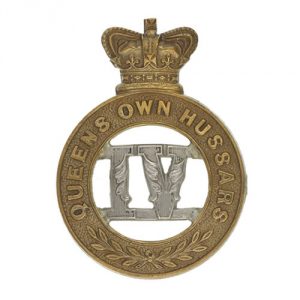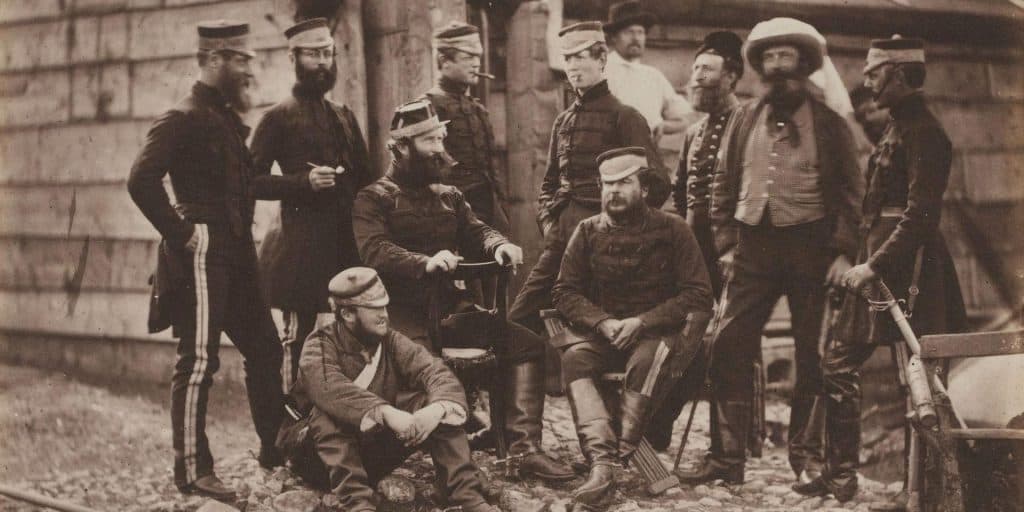4th Queen’s Own Hussars
 Charles II died in February 1685 and was succeeded by his brother, James II. The new king had been on the throne only a few months when the Duke of Monmouth, an illegitimate son of Charles I, headed a rebellion against him.
Charles II died in February 1685 and was succeeded by his brother, James II. The new king had been on the throne only a few months when the Duke of Monmouth, an illegitimate son of Charles I, headed a rebellion against him.
Several regiments were raised by the king to oppose Monmouth, who was defeated at the Battle of Sedgemoor on 6th July 1685.
In this short campaign, the Dragoons had been found very useful in advance and rear guards, outposts and detached duties, and this led the king to raise other regiments of Dragoons, one of which was The 4th Queen’s Own Hussars.
By Commission dated 17th July 1685 the Honourable John Berkeley (later Viscount Fitzhardinge) was appointed the first Colonel of the Regiment, which consisted of eight troops.
In those days “Troops” are what we now call “Squadrons”. The new regiment received the distinguished title of “Princess Anne of Denmark’s Regiment of Dragoons” in honour of James II.’s youngest daughter, who had married Prince George of Denmark and later became Queen Anne of England.
At the time the regiment was raised, and for many years later, regiments were known by the name of their Colonels, so the 4th Hussars were commonly referred to as “Berkeley’s Dragoons.”
Its first engagements were in the 1690s against the Jacobites in Scotland and Ireland, and against the French in the Low Countries during the Nine Years War (1688-97). It also fought in the War of the Spanish Succession (1701-14) in Portugal and Spain in 1706 and took part in a raid on Cherbourg in 1708.
The regiment fought against the First Jacobite Rebellion in 1715. It returned to the Continent in 1742 during the War of the Austrian Succession (1740-48), where George Daraugh was commissioned from the ranks by King George II for saving one of the regiment’s standards at Dettingen (1743). It also fought in the Flanders campaign, including the Battle of Lauffeld (1747).
From 1748, it remained in England for 60 years. During this time it gained its ranking of 4th in the order of precedence in 1751, and the prefix ‘Queen’s Own’ in 1788 after King George III’s wife, Queen Charlotte. It also helped to suppress the Gordon Riots in London in 1780.
Its next foreign action came in 1809 with the Peninsular War (1808-14). There, it fought at Talavera, Busaco, Salamanca, Vittoria and Toulouse, only getting back to Britain in 1814. It then spent eight years in England, where it was designated a light dragoon regiment in 1818.
It was sent on its first Indian posting in 1822. This lasted 20 years and saw it take part in the First Afghan War (1839-42) and the capture of Ghazni in 1839.
Next came one of the most glorious days in the history of The 4th Hussars, indeed one of the best-remembered of all cavalry actions, the Charge of the Light Brigade.
It was The 4th Light Dragoons who silenced the Russian guns and, supporting them in the next line were The 8th Hussars. “Balaklava” is one of many Battle Honours which both regiments have, and Balaklava Day was celebrated by both each year. Private Samuel Parkes of the Regiment was awarded the Victoria Cross for his courageous defence of the Trumpet-Major after the charge.
Brevet-Colonel Lord George Paget notoriously led it into the Charge of the Light Brigade at Balaklava (1854) smoking a cheroot and in 1874 became its full colonel. It converted into a hussar regiment in 1861.

Officers of the 4th (The Queen’s Own) Regiment of Light Dragoons in the Crimea, 1855
The Regiment now entered a period of Home and Imperial service until the outbreak of The Great War, 1914-18. It was at this time that Winston Churchill served in The 4th Hussars. He became Colonel of the Regiment during the last World War and remained so until his death.
In 1914, The Regiment sailed for France and almost immediately saw action, never leaving the area until the Armistice in 1918. The 4th Hussars won 21 Battle Honours and nearly 100 awards for gallantry – but at a high price, losing 500 men killed or wounded.
After mechanisation in 1936, The Regiment saw extensive action during the Second World War in Greece, the Western Desert and Italy. In spite of a spirited defence, Greece was a disaster and The 4th Hussars had to be reformed in Cairo in 1941.
In 1942, The Regiment reversed its fortunes at the Battle of Alam el Halfa acting this time in conjunction with The 8th Hussars, and then followed up the success by helping to pursue the defeated Afrika Corps after the decisive action of The 3rd Hussars at El Alamein.
After the end of the war, The 4th Hussars were involved in the Malayan Campaign before being sent to Germany and amalgamating with The 8th Hussars in 1958.
Titles of The Regiment
- 1685 – The Princess Ann of Denmark’s Regiment of Dragoons
- 1751 – 4th Regiment of Dragoons
- 1788 – 4th (Queen’s Own) Regiment of Dragoons
- 1818 – 4th (The Queen’s Own) Regiment of (Light) Dragoons
- 1861 – 4th (Queen’s Own) Hussars
- 1921 – 4th Queen’s Own Hussars
- 1958 – Amalgamated with the 8th King’s Royal Irish Hussars as The Queen’s Royal Irish Hussars

